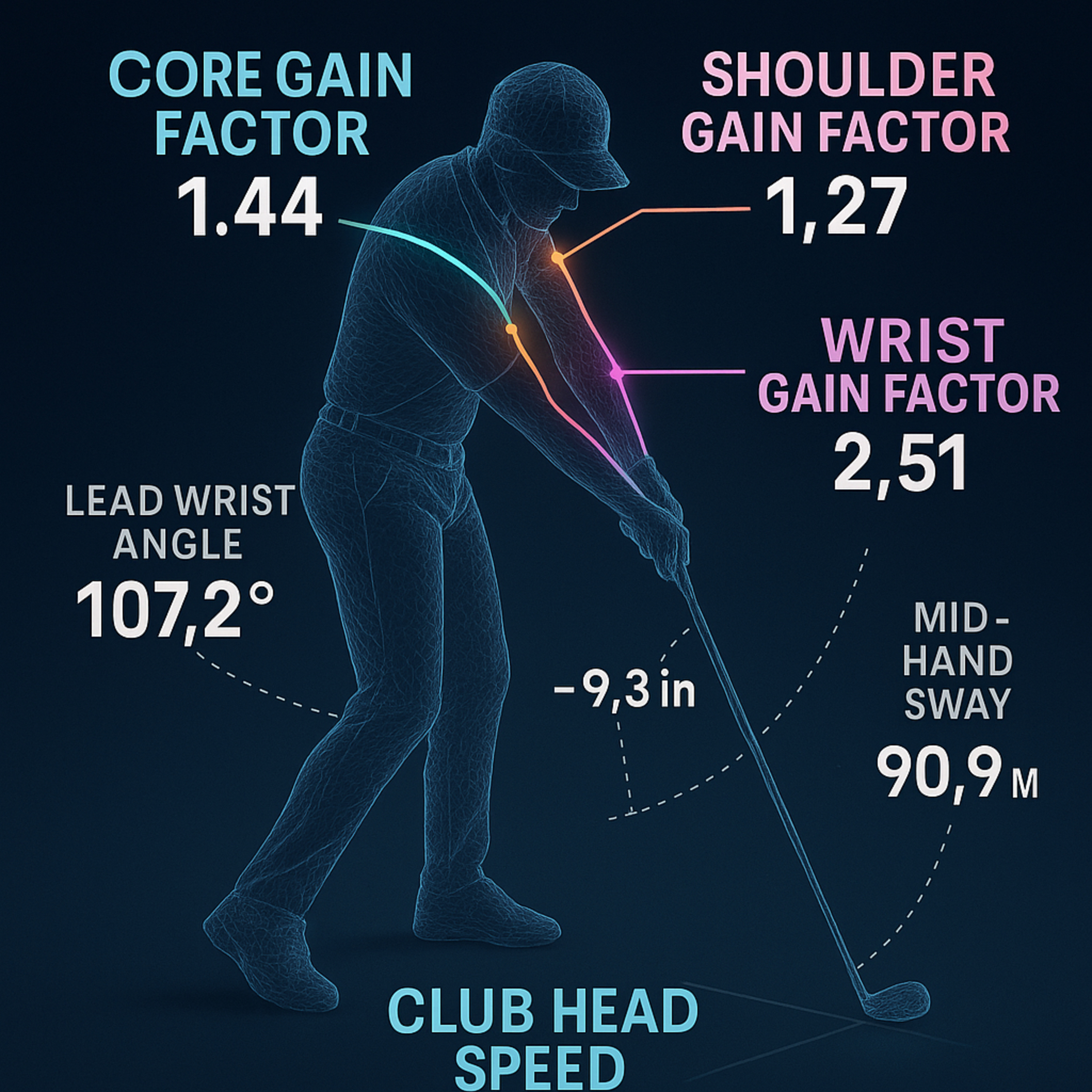#259 Optimizing the Golf Swing: How Gain Factors Reveal Hidden Potential
- Author
- Golf247.eu
- Published
- Thu 19 Jun 2025
- Episode Link
- https://podcasters.spotify.com/pod/show/puttin-pro/episodes/259-Optimizing-the-Golf-Swing-How-Gain-Factors-Reveal-Hidden-Potential-e34e71q
In the evolving world of data-driven golf coaching, few tools have proven as insightful as the new gain factor trackers introduced by SportsBox. Henrik Jentsch, Director of Golf Academy 360°, recently demonstrated their power during a lesson with a collegiate golfer named Declan—an ideal case study for understanding how rotational efficiency translates directly into performance.
Declan came in with a common issue: low ball flight and insufficient distance. Using SportsBox, Jentsch immediately zeroed in on a critical number—Declan’s shoulder gain factor. Much like smash factor (which links ball speed to clubhead speed), gain factors describe the efficiency of speed transfer between body segments during the swing. They offer a new lens for diagnosing swing mechanics with precision.
Understanding Gain Factors
There are three primary gain factors:
Core Gain Factor (pelvis-to-chest): Ideal value is 1.5.
Shoulder Gain Factor (chest-to-lead upper arm): Target is 1.4.
Wrist Gain Factor (lead upper arm-to-shaft): Benchmark is 2.4.
Each number tells a story about where and how efficiently a golfer is generating—and transferring—rotational speed. In Declan’s case, his shoulder gain factor was just 1.26, well below the desired threshold. That immediately indicated a breakdown between torso rotation and arm speed.
Digging Deeper: What Was Going Wrong?
Further analysis painted a clearer picture. Declan’s lead upper arm speed was measured at 788°/sec, significantly below the PGA Tour average of 945°/sec, even though his chest turn speed was relatively solid. Two culprits emerged:
Early Club Release – His lead wrist angle moved from 98° to 102.7° in transition—releasing instead of maintaining lag.
Hands Stuck Behind – His midhand sway was measured at –12 inches, outside the Tour norm (–10.9 to –6.3), indicating that his hands trailed too far behind the body.
These metrics were confirmed visually: his midhand path lines (yellow and orange) were tightly stacked, signaling a lack of spatial separation—another marker of inefficiency.
A Simple Fix: Adding Angle in Transition
Rather than overwhelm Declan with numbers, Jentsch focused on one practical cue: feel like you’re adding angle in transition. This helped address both the early release and the lagging hands.
The result? Significant and measurable improvements:
Wrist angle improved from 89° to 84.4°, showing increased lag.
Midhand sway progressed from –12 to –9.3 inches, closer to Tour standards.
Shoulder gain factor climbed to 1.31, then 1.27—still shy of the 1.4 benchmark, but notably better.
Wrist gain factor peaked at 2.51, exceeding expectations.
Clubhead speed jumped from 79.6 mph to 90.9 mph with a 7-iron.
From Data to Performance
This transformation wasn’t about swing style, but biomechanics. With the help of SportsBox’s gain factors, Jentsch identified the exact inefficiencies in Declan’s movement and made one precise adjustment that unlocked his potential.
As Jentsch notes, “These numbers are like language—once you understand what they’re telling you, it becomes much easier to coach, and much clearer for the player to improve.”
